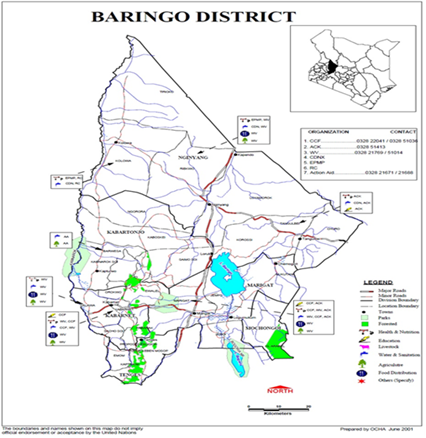"International Journal of Mosquito Research"
Vol-1, Issue-2
Gonotrophic cycle duration, fecundity and parity of Anopheles gambiae complex mosquitoes during an extended period of dry weather in a semi arid area in Baringo County, Kenya
Kabirul Bashar, Faria Farhana Rain, Mahmuda Jesmin, Asaduzzaman
An entomological longitudinal survey was carried out over a 22 month period in two semi-arid villages in Baringo District in Kenya to study how adult malaria vectors survive under semi-arid conditions and during extended periods of dry weather.
Methods
Wild caught female mosquitoes were dissected to examine ovarian lobes for parity status and to determine number of gonotrophic cycles they had undergone. Duration of the first and second gonotrophic cycles were estimated using cage-reared F1 females. Blood-fed females were kept individually in plastic vials and percent oviposition incidence recorded.
Results
Significantly fewer mosquitoes laid eggs during the dry than the wet season. The average duration of the first gonotrophic cycle in the wet season was 4.1 d after blood feeding, 1.1 d (36%) longer than the dry season (3.0 d). The average duration of the second gonotrophic cycle in the wet season was 2.9 d after second blood meal, 0.7 d (31.8%) longer than those in the dry season. Chi-square tests showed the gonotrophic cycle duration was significantly shorter during the dry than the wet season. Both gonotrophic cycle duration and physiological age varied significantly between wet and dry seasons.
Conclusion
These findings suggest the duration of gonotrophic cycle among Anopheles gambiae in dry lands with scarce breeding sites is shorter during the dry than wet season. Low fecundity rates during the dry season could be a sign of reduced reproductive activity. However lack of variation in seasonal mating frequency is a clear indication that oviposition and mating kinetics are influenced differently even under the same environmental conditions. It is likely that the results of this study will shed an understanding on spatial and temporal heterogeneities experienced in malaria transmission in semi-arid regions of the world where malaria and indeed mosquito-borne diseases are a public health menace.
.
Fig: Map of Baringo District
Download Full Article: Click HereClick
Article is also availabe online at University of Nairobi (Digital Repository) website at: http://hdl.handle.net/11295/68914
